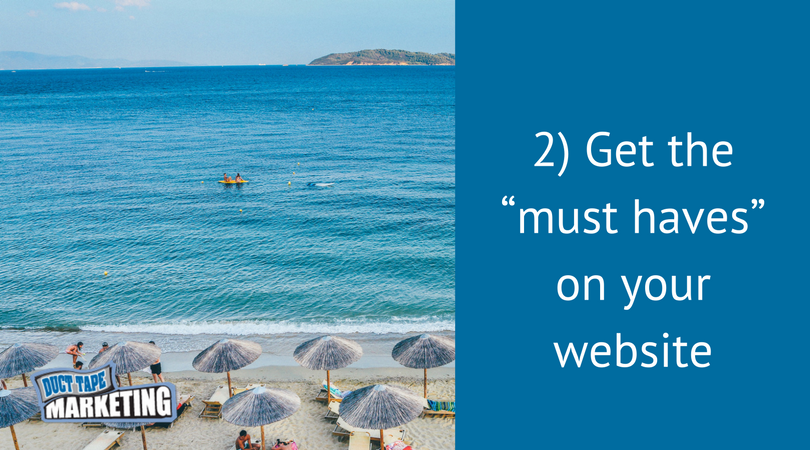7 Must Have Elements of Every Small Business Website. Conversion opportunities need to be an element of the design of your homepage to help guide the journey. They need to see themselves in the story which starts with their challenges, problems, and issues that they don’t know how to solve. You don’t need to cover everything on your homepage, but you need to help guide your visitor to the next steps. Ask yourself what you want your visitor to do when they’re on your homepage. Must have website elements It’s time for the moment you’ve been waiting for: must have website elements. The purpose of the promise headline, above the fold on your homepage, is to show the visitor that you understand the challenges they face. Video allows you to give people a real sense of who you are, what you stand for, and let people hear your story. Trust elements You need to have elements that build trust on your homepage, whether they be logos of current customers or testimonials for your audience to glance over. For example, I wrote a blog post titled the 16 point checklist for the perfect blog post and created a downloadable PDF that people interested in the post could get in exchange for their email address.

In this post – 5 Steps to Restart, Recharge and Revive Your Marketing Right Now! – I introduced an aggressive initiative to help any business owner struggling to stay on plan with their marketing for the year. The idea is to take the mid-point of the year and get a fresh restart.
In post #1 of 5, I introduced – Why You Must Refocus Your Message On Problems Not Solutions
Today we tackle Step #2 – Getting the “must have elements” on your website.
The purpose of your website
Before I can talk about the necessary elements of your website specifically, I need to address the purpose of a website.
Gone are the days of your websites just being a digital brochure for your company. A website now has many jobs including:
- Get found – The website should be optimized for search to help you get found online.
- Build trust – Your website is a key element to building trust. Once a person arrives on your website, it needs to validate their challenges. Your website needs to function the way your customers need it to and expect it to.
- Educate – Your website should teach people how to recognize what their problems and challenges are.
- Inform – Once a person has found you and trusts you, you need to inform them on how you can solve their problems.
- Nurture – Often people need to come back to your website numerous times before making a purchase. Capture their email address and continue to create valuable content that is relevant to their stage in the customer journey to nurture them through to the sale.
- Convert – A conversion can be many things from subscribing to a newsletter, to calling you, to making a purchase on your website. Conversion opportunities need to be an element of the design of your homepage to help guide the journey.
In today’s world, your customer’s journey starts by researching online. People are coming to a conclusion on their own as to whether or not they are interested in buying from you far before you even realize you are being looked at. You need to make sure you have a presence in these early research stages, and completing each of the jobs above will help you do that.
Tell a story
The main goal your website should achieve is to be able to immediately tell a story. What you may get wrong about storytelling on your website is that the story is not about YOU. The story must be the story your customers and prospects are telling themselves. They need to see themselves in the story which starts with their challenges, problems, and issues that they don’t know how to solve. You have to immediately let your website visitor see that you know what they’re struggling with and that there’s a good chance that you know how to solve it.
Guide a journey
Your website must guide your prospects through the buying process and help them decide how they should move forward. You don’t need to cover everything on your homepage, but you need to help guide your visitor to the next steps. Ask yourself what you want your visitor to do when they’re on your homepage. What actions and next steps should they take to find the solutions they’re looking for?
When you think of guiding people through your website, the design is a natural element to consider, but…

COMMENTS